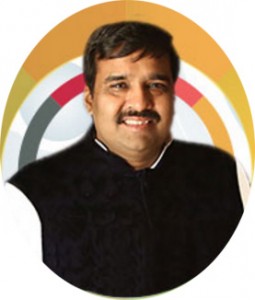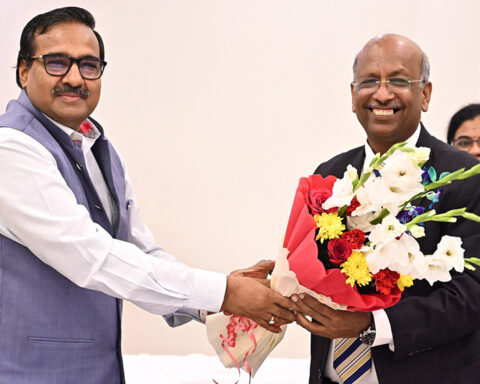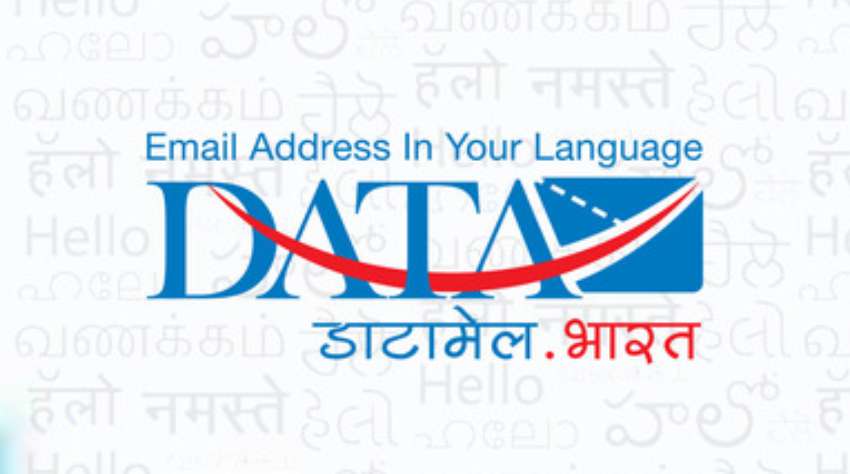“Communicate in eight regional languages and in english language to provide ease of connect and bridge the digital divide among Indians”- Ajay Data
Marking a revolutionary transformation in email communication, Data Xgen Tech has launched the world’s first free “linguistic email service” in eight Indian languages dubbed ‘DataMail’.
The ‘DataMail’ will allow users to access email addresses in Hindi, Gujarati, Urdu, Punjabi, Tamil, Telugu, Bengali and Marathi.
Not only that, the company has also affirmed launching email addresses in three international languages, including Arabic, Russian and Chinese, besides English, said Ajay Data, founder and CEO of Data XGen Technologies Pvt. Ltd.
“The linguistic email service will allow people from across the country to communicate in eight regional languages and in English language to provide ease of connect and bridge the digital divide among Indians,” Ajay Data told the media at the launch.
He construe the initiative as “reaching the sizeable population which lies outside the ambit of the digital connect” and transforming digitalization to the non-English speaking Indian population under ‘Make In India’ and ‘Digital India’ ..
Gradually, the email service will be available in 22 Indian languages which can be downloaded on any Android or IOS mobile devices under the name ‘DATAMAIL’, he added.
Citing an IAMAI report, Data said 89 per cent of Indian population is a non-English speaking segment and Indian languages account for less than 0.1 per cent content on the worldwide web.
“They are unable to read and communicate via email as the language utilised to communicate (in email) is English on the worldwide web. This linguistic email service will enable people across India to communicate in eight regional languages, providing ease of connect and bridging the digital divide,” Data explained.
As per the global Internet report, India ranks 139th in Internet penetration, but stands as one of the countries having largest language diversity in the world.
In Internet penetration, countries like Iceland ranks first, the UAE is 12th, the US 18th, Germany 19th, where language diversity is comparatively very low.
As far as affordability of mobile broadband percentage goes, India ranks 101 with 12.39 per cent of average GDP per capita required for mobile broadband access.
“This gives a clear picture that India should look for digitalization in line with the language diversity to increase penetration since mobile broadband access is expected to be corrected with reforms and competition in the telecom industry,” Data said.
With 220 million users, India is the world’s second-biggest smartphone market, and growing at a rapid pace.
The Indian population has become digitally equipped with Internet connectivity, but the issue of language is extremely critical for achieving greater digital and mobile connectivity
Referring to IAMAI’s report, ‘Proliferation of Indian Languages on Internet’, Data said local language content penetration on Internet is increasing gradually.
While urban penetration reached upto to 43 per cent, the rural penetration stood at 57 per cent, indicating higher acceptance of local language content among rural Internet users.
“It is estimated that enabling local language content on Internet will lead to a growth of 39 per cent in the current Internet user base, of which 75 per cent will come from the rural users,” Data said.
According to ‘DataMail’ analysis based on secondary data for this year, the most spoken languages are: Hindi (544.39 million), Bengali (107.60), Telugu (95.40), Marathi (92.74), Tamil (78.41), Urdu (66.47), Gujarati (59.44), Kannada (48.96), Punjabi (37.55) and Assamese (16.98).
The total population using these languages is around 1,147.95 million, which account for almost 89 per cent of the Indian population.









